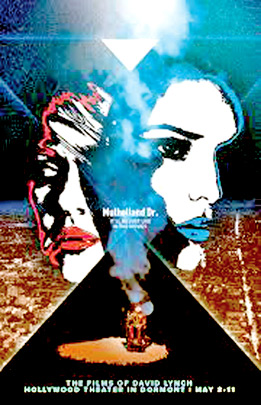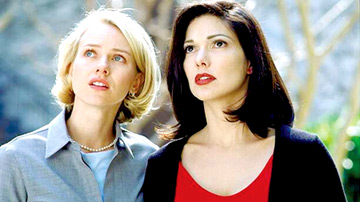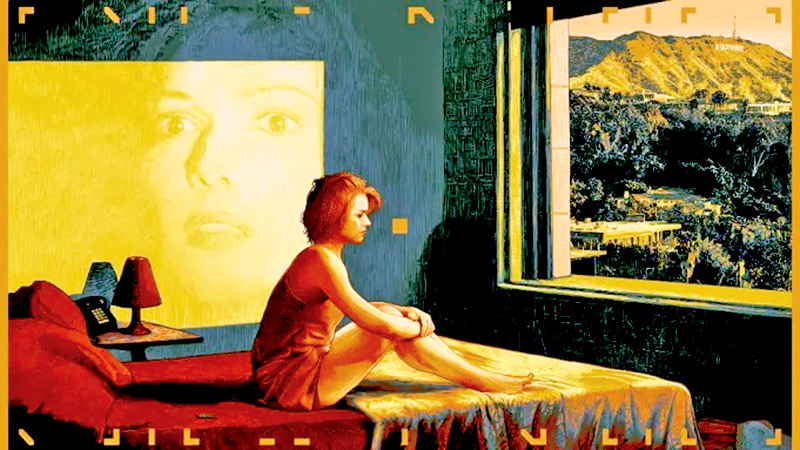David Lynch’s Mulholland Drive is a mesmerizing, enigmatic journey into the labyrinthine complexities of Hollywood dreams, identity, and the subconscious. Released in 2001, the film stands out as one of Lynch’s crowning achievements, showcasing his unique ability to blend surrealism with psychological horror.
 The story follows an amnesiac woman, referred to as “Rita,” who is found in a car accident on Mulholland Drive. She is discovered by Betty Elms, an aspiring actress who has just arrived in Los Angeles. As Betty attempts to help Rita uncover her true identity, the narrative unfolds in a series of fragmented, dream-like sequences that blur the line between reality and illusion.
The story follows an amnesiac woman, referred to as “Rita,” who is found in a car accident on Mulholland Drive. She is discovered by Betty Elms, an aspiring actress who has just arrived in Los Angeles. As Betty attempts to help Rita uncover her true identity, the narrative unfolds in a series of fragmented, dream-like sequences that blur the line between reality and illusion.
One of the film’s most striking features is its atmospheric cinematography. Lynch, alongside cinematographer Peter Deming, creates a visually stunning landscape filled with striking contrasts, haunting shadows, and vivid colours. The mood is often unsettling, enhancing the film’s psychological tension. The use of sound design and music also plays a crucial role in establishing an eerie ambiance that keeps audiences on edge.
Tenderness and tension
The performances are compelling, particularly Naomi Watts as Betty/Rita and Laura Harring as Betty. Watts delivers a nuanced portrayal, capturing both the innocence and vulnerability of her character, while Harring’s performance adds layers of mystery and allure. The dynamic between the characters is electric, driving the narrative through moments of tenderness and tension.
Mulholland Drive can be analyzed through various lenses, particularly the theme of dreams and alternative realities. One interpretation posits that the first part of the film represents a dream of the real Diane Selwyn. In this dream, Diane envisions herself as “Betty Elms,” a successful and optimistic actress—an idealized version of her life. As the narrative progresses, the latter portion reveals Diane’s harsh reality, characterized by personal and professional failures, leading her to a tragic decision involving her former lover, Camilla. This interpretation is supported by Naomi Watts, who suggests that Rita embodies Diane’s perception of her lost love and the fantasy of who she wished Camilla to be.
Mixed reactions
Critics have mixed reactions to this dream-centric interpretation. While some, like Michael Wilmington and Neil Roberts, acknowledge this view as a critique of the dark side of Hollywood, others, like Roger Ebert and Philip French, caution against overanalyzing the film.
Some theorists argue that Betty and Diane may represent two distinct characters who look similar, echoing the superficiality often seen among Hollywood starlets.
This idea of parallel universes or a Möbius strip structure is also posited, suggesting an interconnectedness between the characters’ realities.
 The film’s heavy references to dreams—such as the repeated imagery of beds and sleeping—underscore this exploration. Certain scenes hint that the narrative may unfold within a dream, perhaps with an unknown dreamer. After Diane’s suicide, the concluding scenes blur the distinction between fantasy and reality, indicating a metaphysical dimension to the cinematic experience.
The film’s heavy references to dreams—such as the repeated imagery of beds and sleeping—underscore this exploration. Certain scenes hint that the narrative may unfold within a dream, perhaps with an unknown dreamer. After Diane’s suicide, the concluding scenes blur the distinction between fantasy and reality, indicating a metaphysical dimension to the cinematic experience.
Audience as detectives
Film theorist David Roche notes that Mulholland Drive does not simply present a mystery but actively positions the audience as detectives, inviting them to navigate its intricate narrative. Ultimately, the film’s unanswered questions and unresolved mysteries highlight the complexities of understanding dreams and reality within Lynch’s cinematic universe.
The film’s ambiguous structure invites multiple interpretations, leaving viewers pondering its meaning long after the credits roll. Lynch embraces the surreal, often challenging conventional storytelling methods to explore themes of ambition, desire, and the darker side of the Hollywood dream. The nonlinear narrative and the incorporation of symbolism contribute to an atmosphere of intrigue, inviting viewers to piece together its many mysteries.
Mulholland Drive is not a film for everyone; its slow pace and abstract narrative may frustrate those seeking conventional resolutions. However, for those willing to immerse themselves in Lynch’s world, it offers a rich, multilayered experience that rewards repeat viewings. The film ultimately serves as a powerful commentary on the duality of dreams and reality, leaving audiences both unsettled and captivated.
The film stands as a masterful exploration of identity and desire, encapsulated in Lynch’s signature style. It is a poignant reminder of the fragility of dreams and the complex interplay between the self and the world, solidifying its place as a modern classic in cinema.






